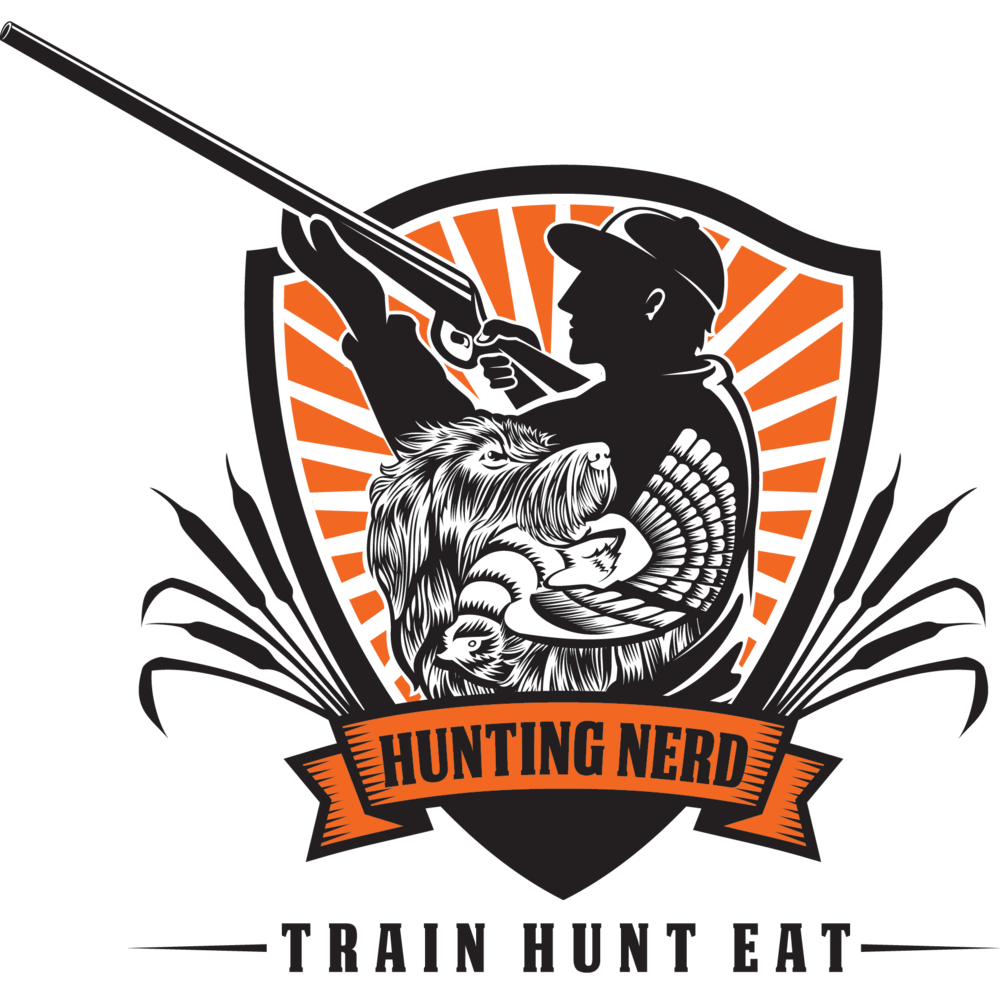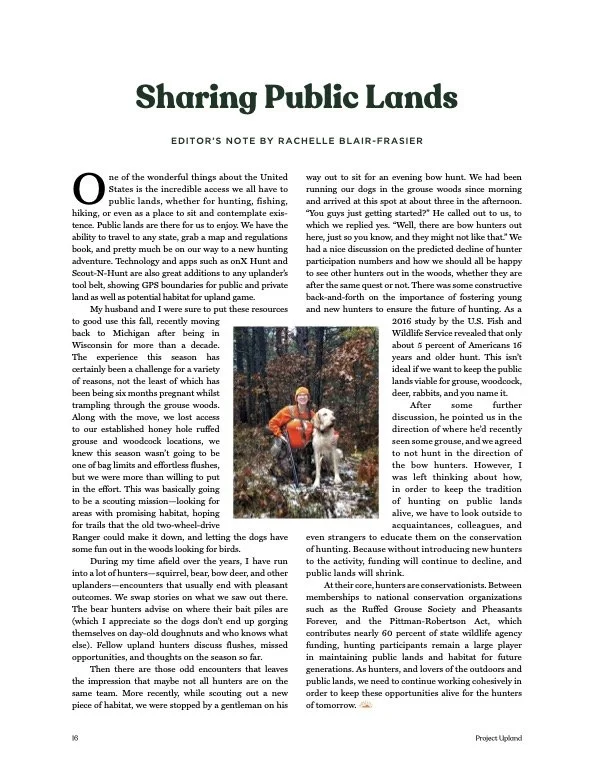One of the wonderful things about the United States is the incredible access we all have to public lands, whether for hunting, fishing, hiking, or even as a place to sit and contemplate existence. Public lands are there for us to enjoy. We have the ability to travel to any state, grab a map and regulations book, and pretty much be on our way to a new hunting adventure. Technology and apps such as onX Hunt and Scout-N-Hunt are also great additions to any uplander’s tool belt, showing GPS boundaries for public and private land as well as potential habitat for upland game.
My husband and I were sure to put these resources to good use this fall, recently moving back to Michigan after being in Wisconsin for more than a decade.
The experience this season has certainly been a challenge for a variety of reasons, not the least of which has been being six months pregnant whilst trampling through the grouse woods.
Along with the move, we lost access to our established honey hole ruffed grouse and woodcock locations, we knew this season wasn’t going to be one of bag limits and effortless flushes, but we were more than willing to put in the effort. This was basically going to be a scouting mission—looking for areas with promising habitat, hoping for trails that the old two-wheel-drive Ranger could make it down, and letting the dogs have some fun out in the woods looking for birds.
During my time afield over the years, I have run into a lot of hunters—squirrel, bear, bow deer, and other uplanders—encounters that usually end with pleasant outcomes. We swap stories on what we saw out there. The bear hunters advise on where their bait piles are (which I appreciate so the dogs don’t end up gorging themselves on day-old doughnuts and who knows what else). Fellow upland hunters discuss flushes, missed opportunities, and thoughts on the season so far.
Then there are those odd encounters that leaves the impression that maybe not all hunters are on the same team. More recently, while scouting out a new piece of habitat, we were stopped by a gentleman on his way out to sit for an evening bow hunt. We had been running our dogs in the grouse woods since morning and arrived at this spot at about three in the afternoon. “You guys just getting started?” He called out to us, to which we replied yes. “Well, there are bow hunters out here, just so you know, and they might not like that.” We had a nice discussion on the predicted decline of hunter participation numbers and how we should all be happy to see other hunters out in the woods, whether they are after the same quest or not. There was some constructive back-and-forth on the importance of fostering young and new hunters to ensure the future of hunting. As a 2016 study by the U.S. Fish and Wildlife Service revealed that only about 5 percent of Americans 16 years and older hunt. This isn’t ideal if we want to keep the public lands viable for grouse, woodcock, deer, rabbits, and you name it.
After some further discussion, he pointed us in the direction of where he’d recently seen some grouse, and we agreed to not hunt in the direction of the bow hunters. However, I was left thinking about how, in order to keep the tradition of hunting on public lands alive, we have to look outside to acquaintances, colleagues, and even strangers to educate them on the conservation of hunting. Because without introducing new hunters to the activity, funding will continue to decline, and public lands will shrink.
At their core, hunters are conservationists. Between memberships to national conservation organizations such as the Ruffed Grouse Society and Pheasants Forever, and the Pittman-Robertson Act, which contributes nearly 60 percent of state wildlife agency funding, hunting participants remain a large player in maintaining public lands and habitat for future generations. As hunters, and lovers of the outdoors and public lands, we need to continue working cohesively in order to keep these opportunities alive for the hunters of tomorrow.

